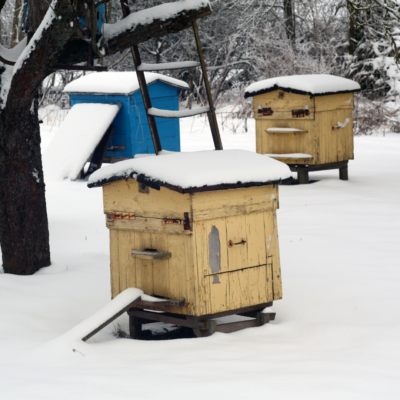Beekeeping winterization is a crucial process that involves preparing honeybee colonies for the challenges of the cold winter months (October/November – February). This strategic approach ensures the survival and well-being of the bees during a period when resources are scarce, and temperatures are unforgiving.
One key aspect of winterization involves assessing the strength and health of the bee colony. Beekeepers typically examine the population size, the presence of a healthy queen, and the overall vitality of the hive. Colonies that are weak or diseased may require special attention or intervention to improve their chances of surviving the winter.
Adequate food stores are essential for bee survival during winter when foraging becomes challenging. Beekeepers must ensure that the hive has enough honey reserves to sustain the colony through the colder months. This often involves leaving sufficient honey in the hive after harvesting, as well as providing supplemental feeding if necessary. Bees require a significant amount of energy to generate heat and maintain the cluster necessary for winter survival.
Insulation is another critical component of winterization. Beehives are often wrapped or insulated to prevent heat loss and protect the colony from harsh winds. Adequate ventilation is also essential to prevent excess moisture buildup, which can be detrimental to the bees.
Strategic hive placement is part of winterization planning. Beehives are often positioned in a way that minimizes exposure to harsh winter winds while maximizing exposure to sunlight. This helps maintain a more stable temperature within the hive.
Varroa mite management is a year-round concern for beekeepers, but it becomes especially crucial during winter. These parasitic mites can weaken bee colonies, making them more susceptible to the challenges of winter. Effective mite control measures are implemented as part of winterization to ensure the health of the colony.
Beekeepers may also use entrance reducers or mouse guards to protect the hive from unwanted visitors and predators during the winter months.
In summary, beekeeping winterization is a comprehensive approach to prepare honeybee colonies for the challenges of winter. It involves assessing colony strength, ensuring an adequate food supply, providing insulation, strategically placing hives, managing pests, and implementing other measures to enhance the chances of the hive’s survival and well-being during the winter season. This careful planning and preparation contribute to the sustainability of bee colonies and the success of beekeeping operations.




